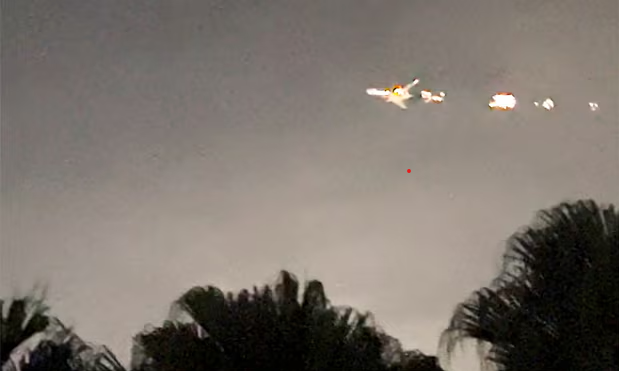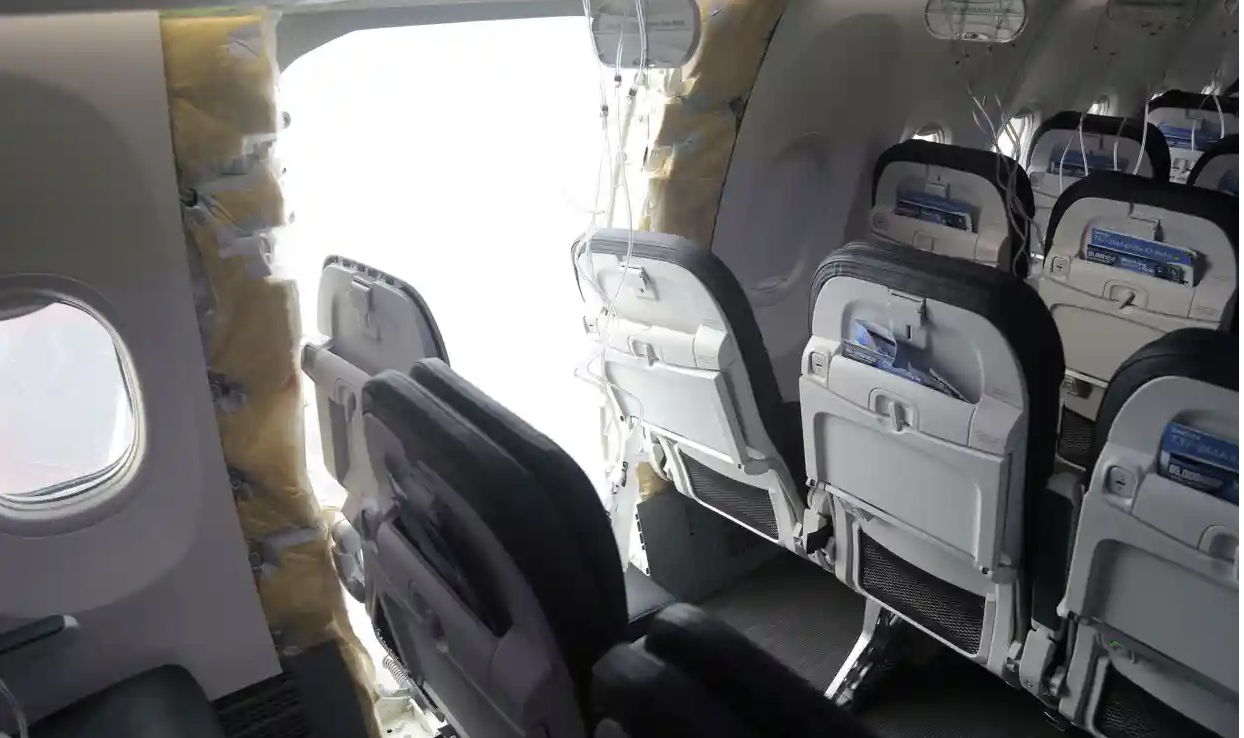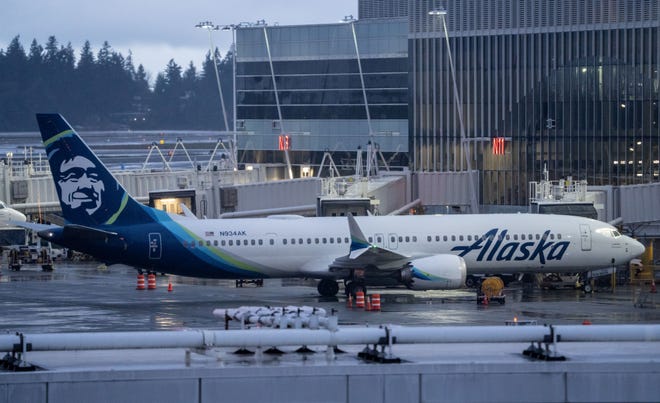Black box mystery around mid-air blowout
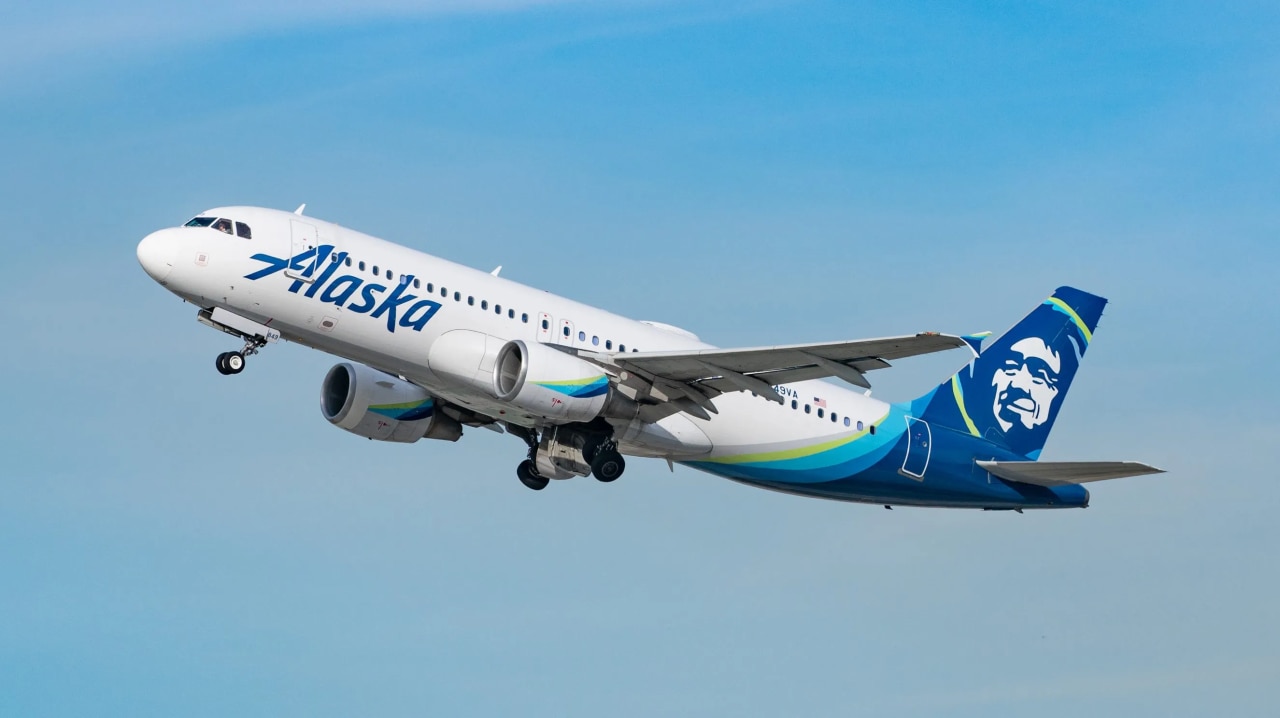
Investigators seeking answers about what caused an Alaska Airlines plane’s near-catastrophic mid-flight blowout earlier this month are working without a key piece of evidence: audio from the flight’s black box cockpit voice recorder.
National Transportation Safety Board Chair Jennifer Homendy said at a press conference the in-flight audio of Alaska Airlines Flight 1282, which was carrying 171 passengers, had been lost amid the chaos of making an emergency landing at Portland International Airport in Oregon 35 minutes into its journey.
“The cockpit voice recorder was completely overwritten. There was nothing on the cockpit voice recorder,” Homendy told reporters.
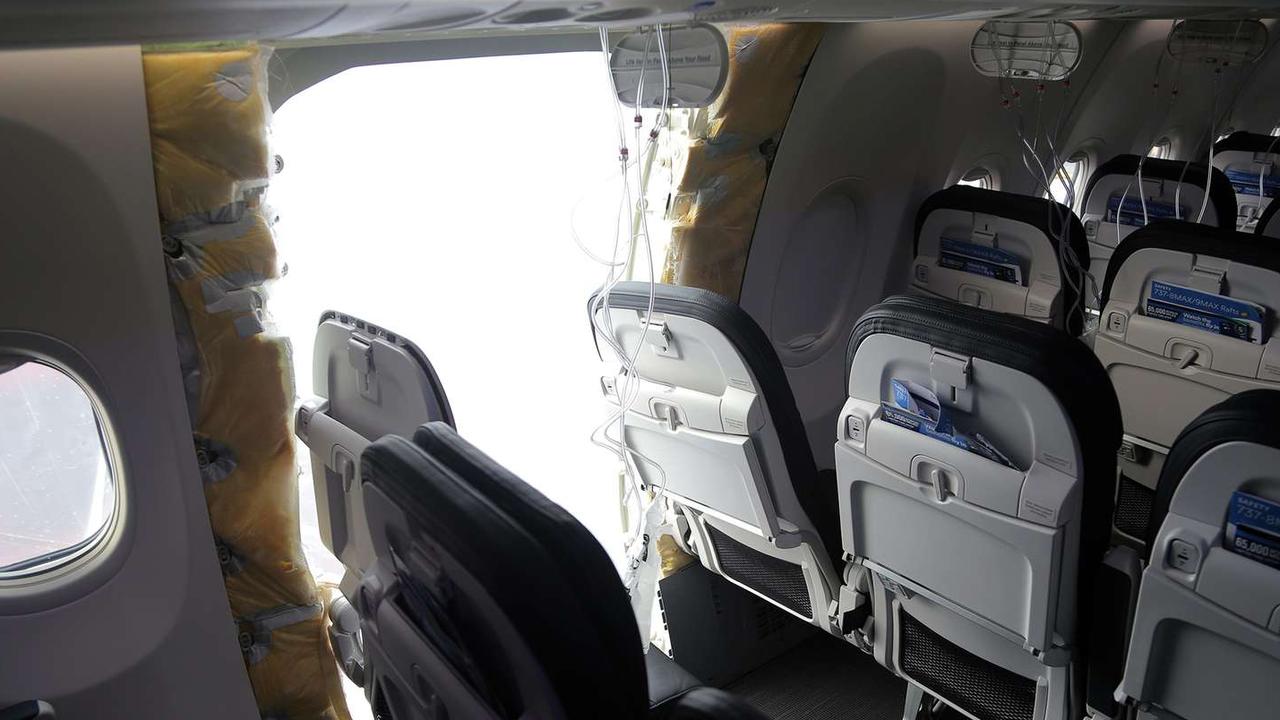
Current Federal Aviation Authority regulations only require black boxes to record two hours of flight audio, including pilots’ voices, any incoming or outgoing radio transmissions or any engine sounds.
At the two-hour mark, any captured audio is automatically recorded over with the next two hours.
The Boeing 787 MAX 9 aircraft — which had been scheduled to fly between Portland and Ontario, California — had to return to the airport after a plug covering an unused exit door went flying off mid-flight, leaving a gaping hole to the outside and prompting the emergency landing.
No one aboard the flight was injured and the 28-kilo door plug was found by a Portland teacher in his backyard Sunday.
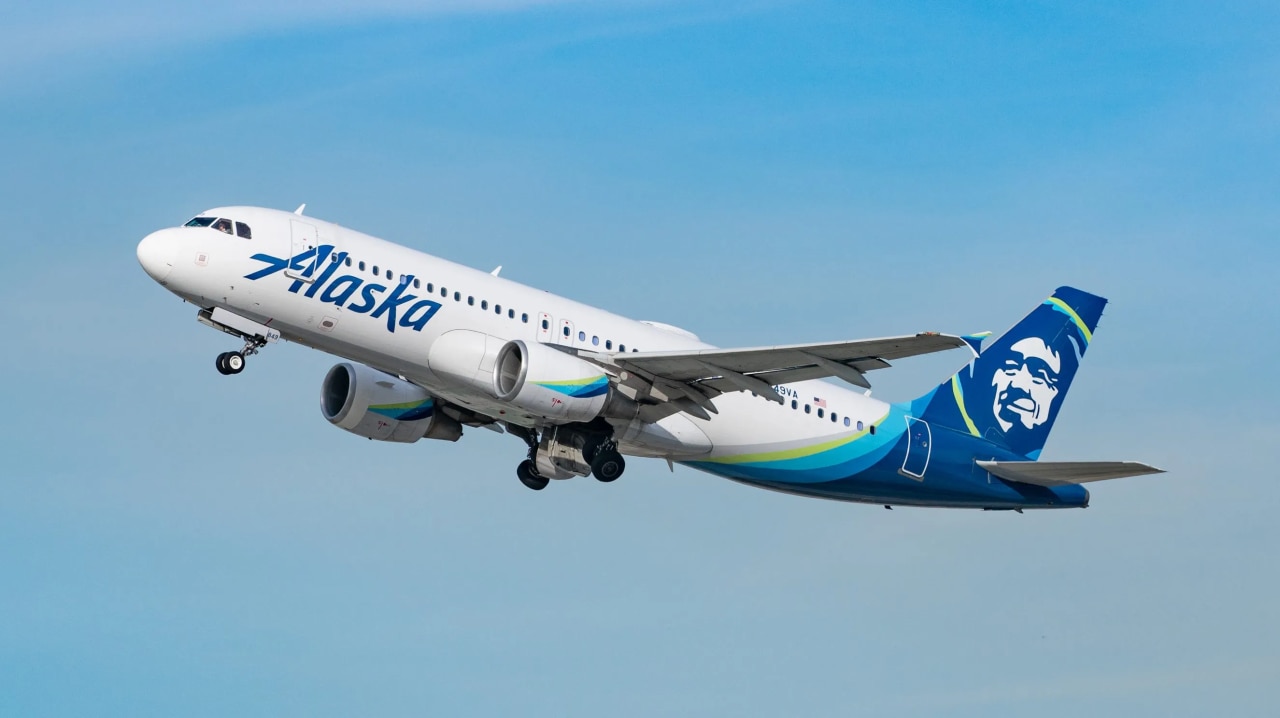
Once the craft landed and was safely evacuated, maintenance crews went to retrieve the black box but found the audio was overwritten because the circuit breaker had not been cut.
“We have nothing,” Homendy said.
The clearly frustrated NTSB chief said the agency has investigated 10 other near-misses involving commercial flights over the last six years where the flight recorder had been overwritten.
Most harrowing was a 2018 incident where an Air Canada plane came “within 60 feet” of landing on a taxiway at San Francisco International Airport which contained four other planes packed with a total of nearly 1,000 passengers and crew.
Homendy said such incidents highlight the urgent need to increase the black box recording threshold from two hours to 25 hours, which the NTSB has been pushing for since 2018.
In November last year, the FAA announced a new proposed rule that would require cockpit voice recorders to capture 25 hours of audio, but Homendy points out that the rule, if enacted, would only apply to newly manufactured aircraft, and therefore would not have affected Alaska Airlines Flight 1282 or any of the other near-disasters she referenced.

The loss of a door plug in the cabin blew a refrigerator-size hole in the plane, which had 177 passengers and crew on board, none of whom were seriously injured.
“Cockpit voice recorders aren’t just convenient for the NTSB or FAA to use in investigations. They are critical to helping us accurately pinpoint what was going on,” she said.
“If that communication is not recorded, that is, unfortunately, a loss for us, a loss for the FAA and a loss for safety. That information is key, not just for investigation, but for improving aviation safety.”
Homendy then said the NTSB was calling on the FAA to change its proposed rule to include retrofitting existing aircraft with the capability to record for 25 hours at a time.
“If the FAA won’t do it, we hope Congress will take action in the FAA reauthorisation bill to ensure that it does.”
Following Friday’s incident, all Boeing 737 MAX 9 jetliners used by Alaska Airlines and United Airlines were grounded as the FAA began inspections of each one, resulting in hundreds of flight cancellations over the weekend.
Eighteen of Alaska Airlines’ 65 737 MAX 9 planes were put back into service on Saturday, but were quickly pulled back on Sunday after the company received notice from the FAA that the planes might require more work.
Alaska Airlines did not respond to a request for comment Monday.
All Boeing 737 MAX planes worldwide were grounded between March 2019 and November 2020 after two fatal crashes involving the craft in the Indonesian Sea and Ethiopia in which 346 people were killed.
American Airlines, Southwest Airlines and United Airlines also had to ground 64 of the 737 MAX planes in their fleets in 2021 because of issues with the planes’ electrical systems.
This article originally appeared on the New York Post and has been republished with permission
Newer articles
<p>The ceremony was held in Moscow amid a tense geopolitical situation and diplomatic rift with the West</p>
West has a decision to make – Putin
Free Madonna concert draws crowd of 1.6m to Brazil’s Copacabana beach
Labour's Sadiq Khan easily wins record third term as mayor of London
Hamas tells Qatari, Egyptian mediators it agrees to ceasefire proposal
Fans stunned by TV star’s weight loss
Craig David, a hitmaker since 2000, is still getting audiences dancing
Drake denies allegations by Kendrick Lamar of underage sex and harbouring secret child
Bombshell new theory on Titan sub disaster
For Putin, Gaza is an endless gift

